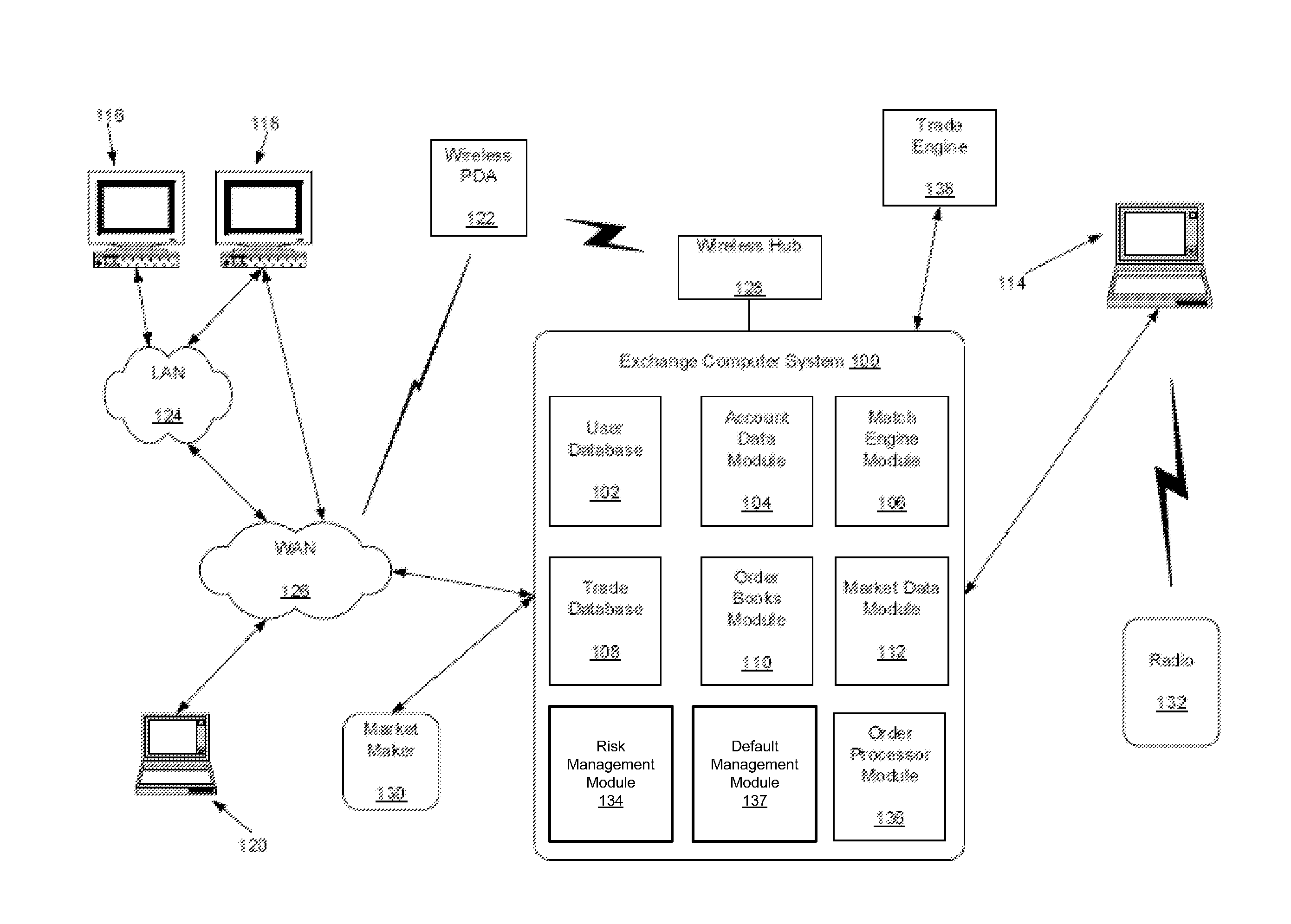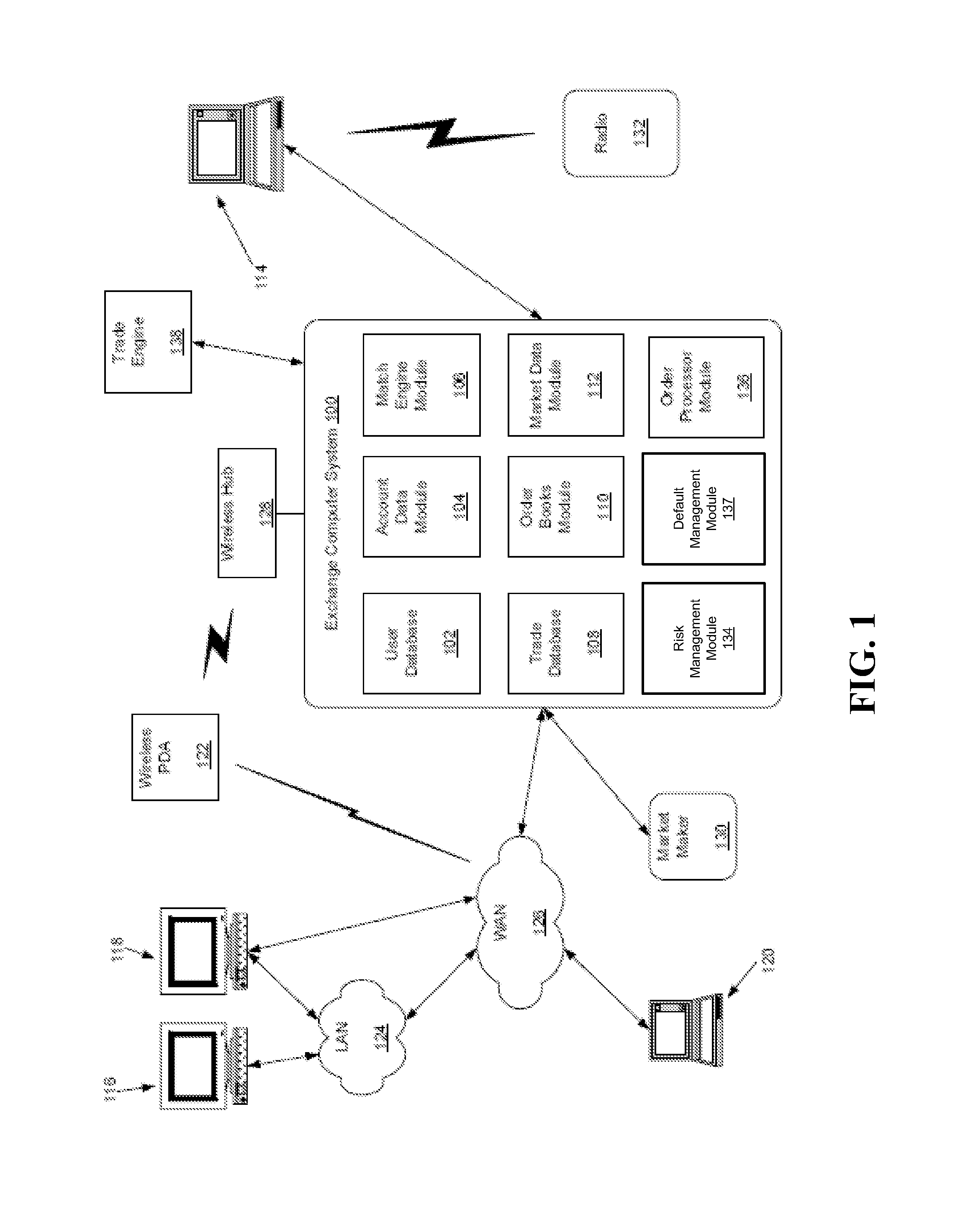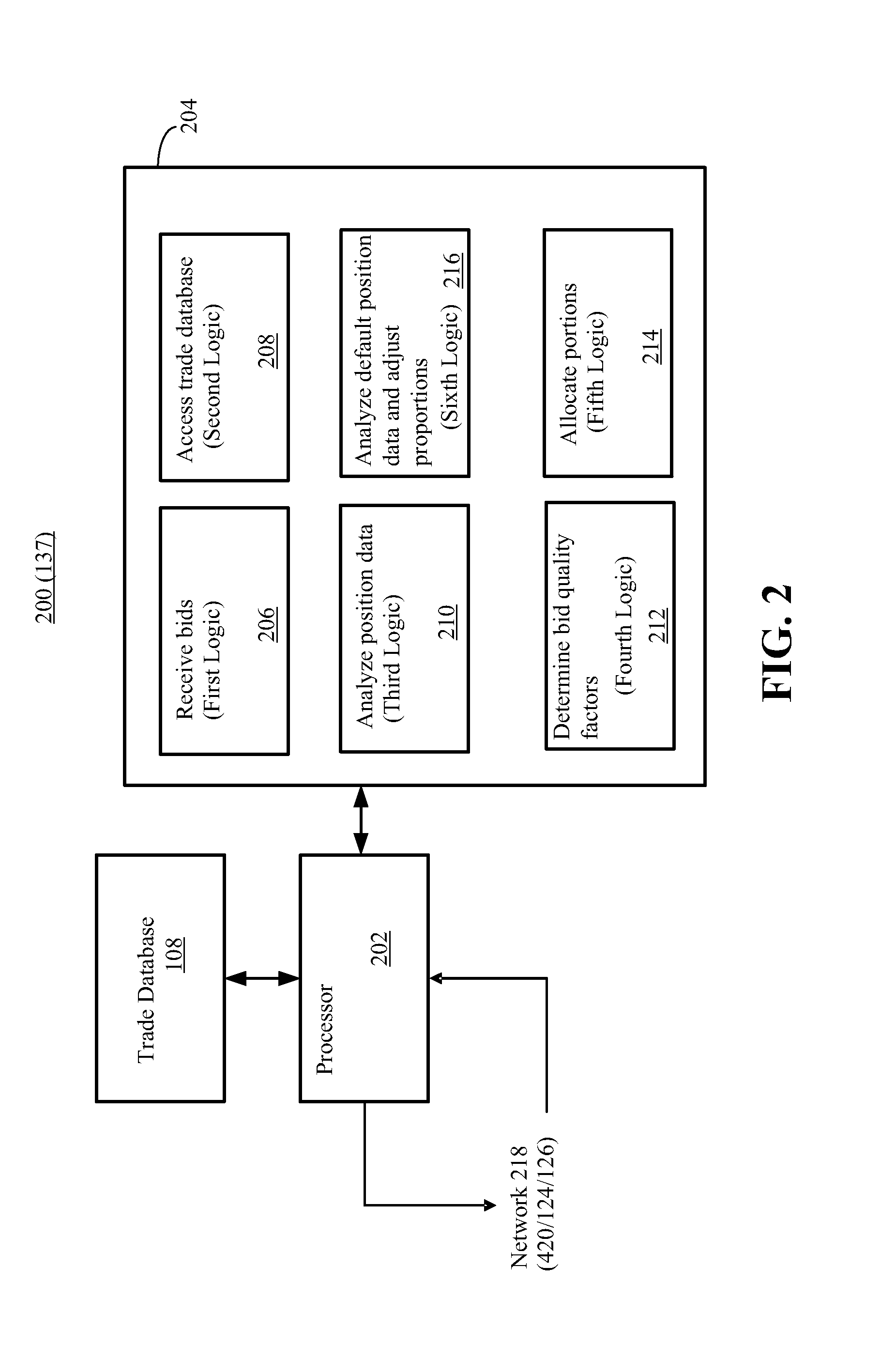Guaranty Fund Apportionment in Default Auctions
a technology of guaranty funds and auctions, applied in finance, instruments, data processing applications, etc., can solve the problems that the trading of irs and irs futures contracts still presents a risk of loss for the exchange, and the risk of loss may remain
- Summary
- Abstract
- Description
- Claims
- Application Information
AI Technical Summary
Benefits of technology
Problems solved by technology
Method used
Image
Examples
Embodiment Construction
[0015]The disclosed embodiments relate to systems and methods for default management. The disclosed methods and systems are implemented in connection with an auction of the open positions of a market participant (e.g., clearing firm member) in default. The open positions are transferred via the auction to other market participants to minimize losses to be covered by a guaranty fund to which each market participant contributes funds. The disclosed methods and systems are configured to apportion the contributions of the non-defaulting market participants to one or more tranches for prioritization in accordance with the quality of their bids in the auction. For each winning bid from a market participant, a portion of the guaranty fund contribution for that market participant is allocated to senior tranche. Non-winning bids may be allocated to a junior tranche based on an offset between the bid and the winning bid. Funds in the senior tranche(s) have a higher priority than funds in the ...
PUM
 Login to View More
Login to View More Abstract
Description
Claims
Application Information
 Login to View More
Login to View More - R&D
- Intellectual Property
- Life Sciences
- Materials
- Tech Scout
- Unparalleled Data Quality
- Higher Quality Content
- 60% Fewer Hallucinations
Browse by: Latest US Patents, China's latest patents, Technical Efficacy Thesaurus, Application Domain, Technology Topic, Popular Technical Reports.
© 2025 PatSnap. All rights reserved.Legal|Privacy policy|Modern Slavery Act Transparency Statement|Sitemap|About US| Contact US: help@patsnap.com



